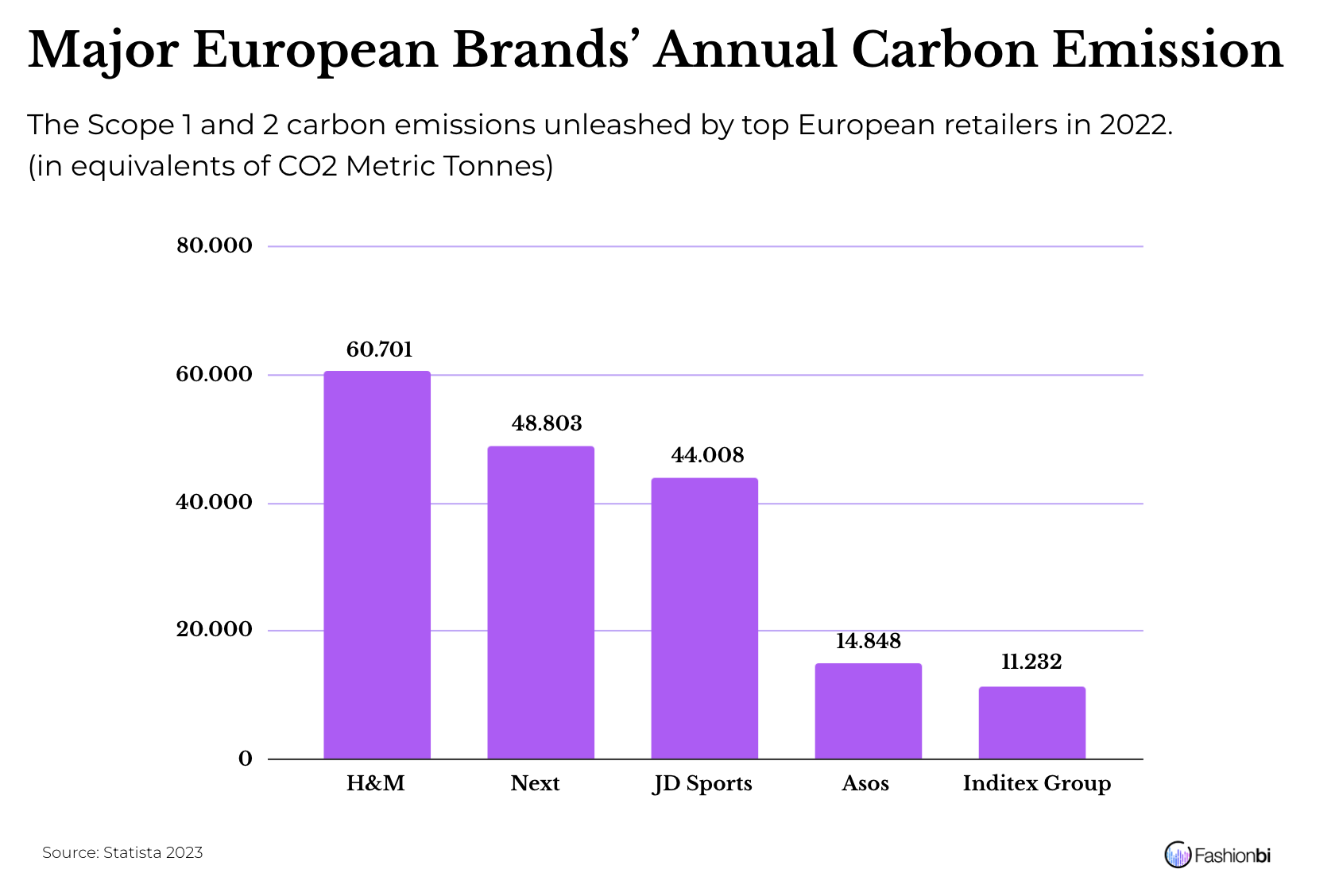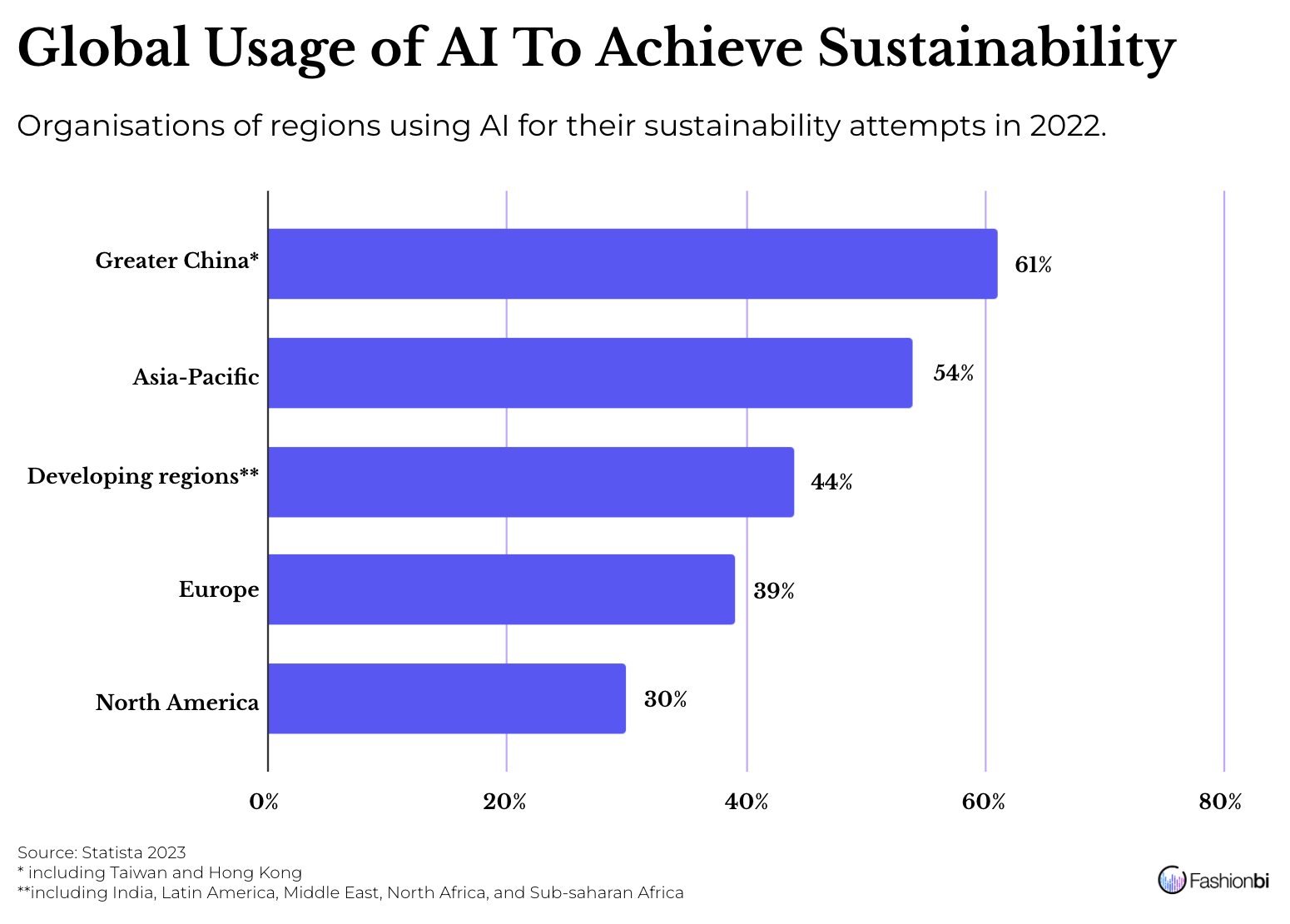Table of contents
AI technology has provided human beings with greater resources. It has the potential to act as a fundamental reinforcement to reach the sustainability aims and extenuate their results on the environment, and climate.
According to the Intergovernmental Panel on Climate Change (IPSS)’s 2023 Synthesis report, global warming is most likely due to human routines, including the emissions from greenhouse gases. The International Energy Agency states that the global emission of CO2 has increased by 0.9% in 2022, reaching more than 36.8 billion tonnes. Along with that, around 3.6 billion of the human population have been exposed to climate-driven issues.

Major companies can help mitigate this climate change and confer their worldwide inference on their businesses. Almost 82% of consumers are expecting companies to act upon climate emergencies. The National Climate Assessment in the US has estimated that not taking any actions for these emergencies can cost over $500 billion per year in the US economy by 2090. Boston Consulting Group (BCG) and BCG GAMMA, in collaboration with public organisations including UNESCO, found that over 87% of the respondents agree with the statement that AI is a useful apparatus in climate emergencies.

AI in Sustainable Fashion
Artificial intelligence started to be a part of the fashion industry, not only to boost consumer experience but also in designing and creating new products. In this way, AI has supported the fashion industry to ensure and enhance sustainability.

Circular Fashion
Many brands have already established their strong roots in the circular economy. Based on The Circular Fashion Index (CFX), Patagonia has scored 8.5 out of 10 with its recycled fabric usage and rental program, Levi Strauss & Co. scored 8.20 with its new venture in rentals, and The North Face with 8.05 due to its use of recycled fabrics. AI can come up with an effective idea to repurpose used clothes and/or textile waste and suggest ways to recycle and upcycle them. By deeply analysing the data sourced from the details of customers' preferences, product returns, production waste, and possible recycling processes, AI algorithms can brainstorm various opportunities to reduce, reuse and recycle.
Virtual Sampling and Try-On
A conventional production process in the fashion industry requires a multiple number of iterations. This will lead to an increase in fashion waste. With the support of generative AI, one can design and visualise the sample products in 3D/virtual modelling. It will also enable the manufacturers to decide the look, fit, and performance of the product. Brands such as Coach, Nike, HUGO, Adidas, Victoria's Secret, and Abercrombie & Fitch have already used this technology.
AI offers customers to virtually try on the garments. With this, they can analyse the fitting and look of the apparel on them from various angles. This technology will reduce product returns which leads to higher customer satisfaction and lower transit costs and more. Farfetch has introduced virtual try-on for sneakers and clothes. Off-White (using voice command), Marc Jacobs (for The Tote Bag collection), Gucci (for the shoe collection) and Prada (with hand gesture technology) offered virtual try-on on Snapchat. Dior unveiled the Check’N’Dior AR filter on Instagram.
Forecasting on Demand
Ensuring the right pieces at the right moment in the right quantities can lead the fashion industry to sustainability at a swift pace. Having AI algorithms in service will support the fashion players to evaluate past data and trends to identify future trends and demands for the categories of fashion. This will result in the optimisation of inventory and production. This strategy has been evidenced by brands (especially fast-fashion) like Macy's, Zara, Dior, H&M, and Nike.
Creative Advantage
AI can be used as a tool in assisting the fashion designers team during the process of designing a collection. The technology can produce best-selling designs by going through the trends, customer preferences, brand style, and many other attributes. The overall process would also save time by reducing other wastes. Tommy Hilfiger collaborated with IBM Watson to use AI in the decision-making of design and manufacturing. Adidas uses AI to simulate 3D designs and to create avatars to present those products.
Supply Chain and Inventory
Evidently, many manufacturers are choosing environmental compliance audits through third parties in order to ensure they and their suppliers being complied with environmental regulations. Even though the audits lead the brands to produce eco-friendly products, it is quite difficult for them to follow all the rules and to check all their suppliers’ activities. Therefore, AI can give brands and manufacturers a better vision of sustainability in the supply chain and inventory.
In inventory, the technology can track the sales data and stock levels, and come up with well-informed decisions in restocking, production, and markdowns. By analysing the supply chain data which includes manufacturing, distribution, sourcing, and transportation, AI can find out the issues and ineffectiveness, and propose a strategy to implement. These practices will reduce material waste, transportation distance, overall cost, and negative environmental impact.
H&M and Zara are using AI to improve their supply chain structure, adjust inventory, production, and distribution, and reduce total waste. Amazon Web Services (AWS) chose AI for maintaining its effective supply chain.
Customer Care
AI has the ability to analyse the interactions carried out by the customers and define the emotions and purpose of those interactions. The technology will further use bots to identify optimistic, pessimistic, and neutral intentions which will support the brands to help the customers in the desired way. Zara approached AI for collecting data on customer preferences. Dior uses an AI chatbot, and Dior Insider, and gets in touch with its customers through WhatsApp and Facebook Messenger to offer the latest personalised collections. Gucci has introduced AI-driven virtual in-store assistants to help their customers.
Personalised Options
Many brands are employing AI-powered systems to offer personalised recommendations for their customers. The AI system will be surfing through the customer preferences, purchasing behaviours, browsing history, and body sizes & measurements. With the help of this system, the brands can determine which products would sell and which won’t, leading to cutting down costs and environmental impacts. Levi Strauss & Co. partnered with Lalaland.ai to build personalised AI models to showcase its collections.
Cover Image: Gucci AR Shoe Try-on on Snapchat, courtesy WWD.